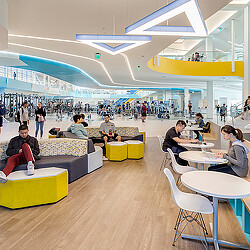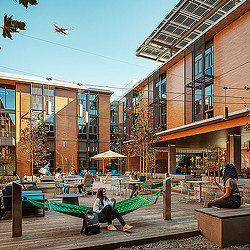Are Educators and Campus Staff Ready for an Unassigned Workplace?
In the age of hybrid work, campuses have an opportunity to explore new approaches to workspace, specifically shared and unassigned space for staff and educators.
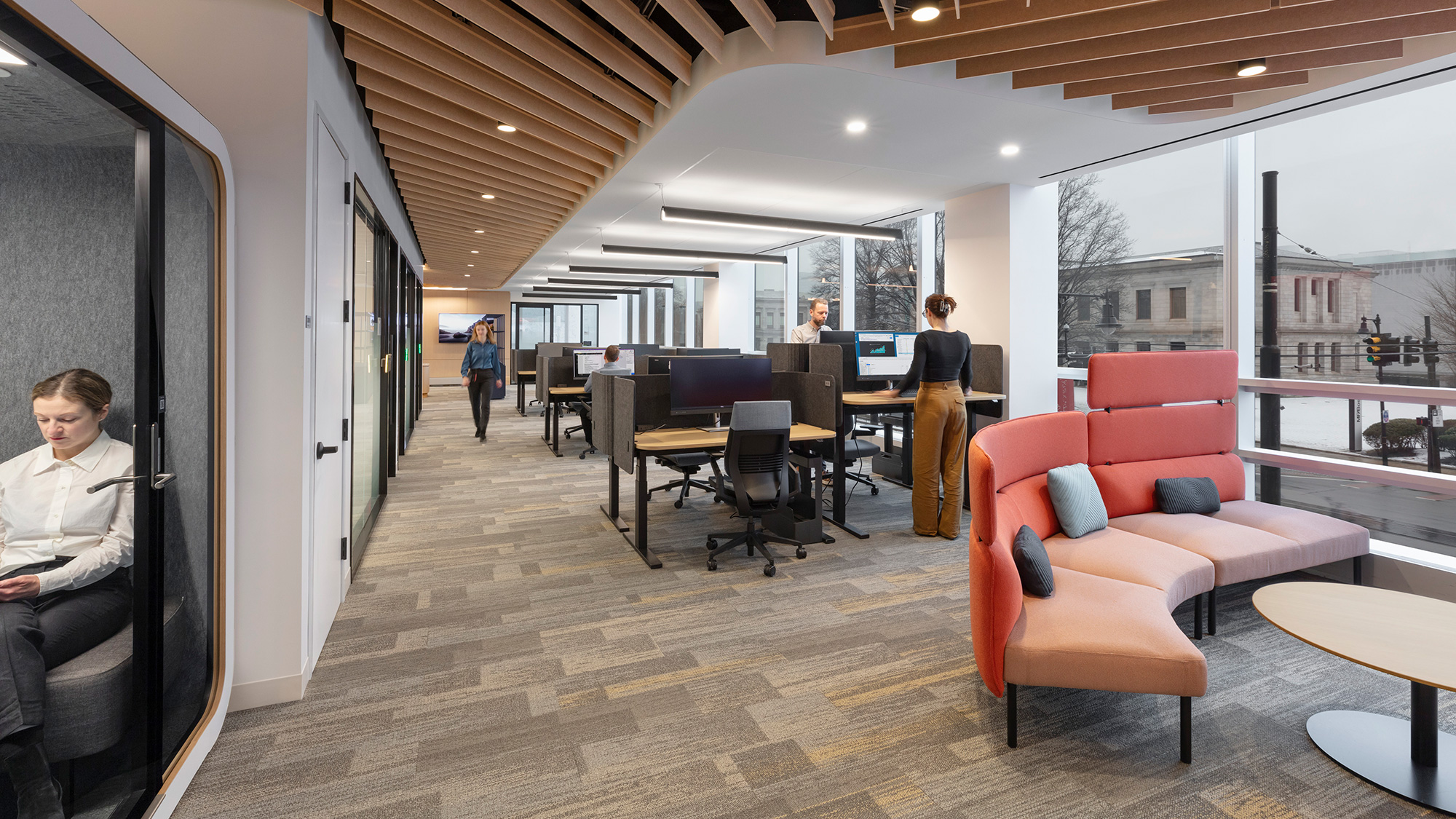
Editor’s note: This is the second blog in this series. To learn more about the 2023 Education Engagement Index survey, please read part one and part two. Learn more about our survey method.
Because a large portion of campuses are made up of office space, many of our higher education clients are wondering if they are making the best use of this real estate. In our work at Gensler, across all project types, we look to the needs of the future users of the space to inform key decisions about strategy, planning, and design. In the case of campus office space, especially now in the age of hybrid work, we are helping many campuses understand the workstyles and attendance patterns of educators and staff in order to determine the right balance of space.
In this installment of our Education Engagement Index blog series, we delve into the responses of educators and staff around hybrid and virtual work to see how their preferences might influence the allocation of workspaces on campus.
Campus presence is increasing, but hybrid is still the most common workstyle.
The 2023 survey saw a rise in the desire for on-campus work compared to 2022 for both educators and staff; however, the majority are working in either a hybrid or virtual manner. While the number of people working in these ways might fluctuate year to year, we don’t expect all work to be on campus any time soon.
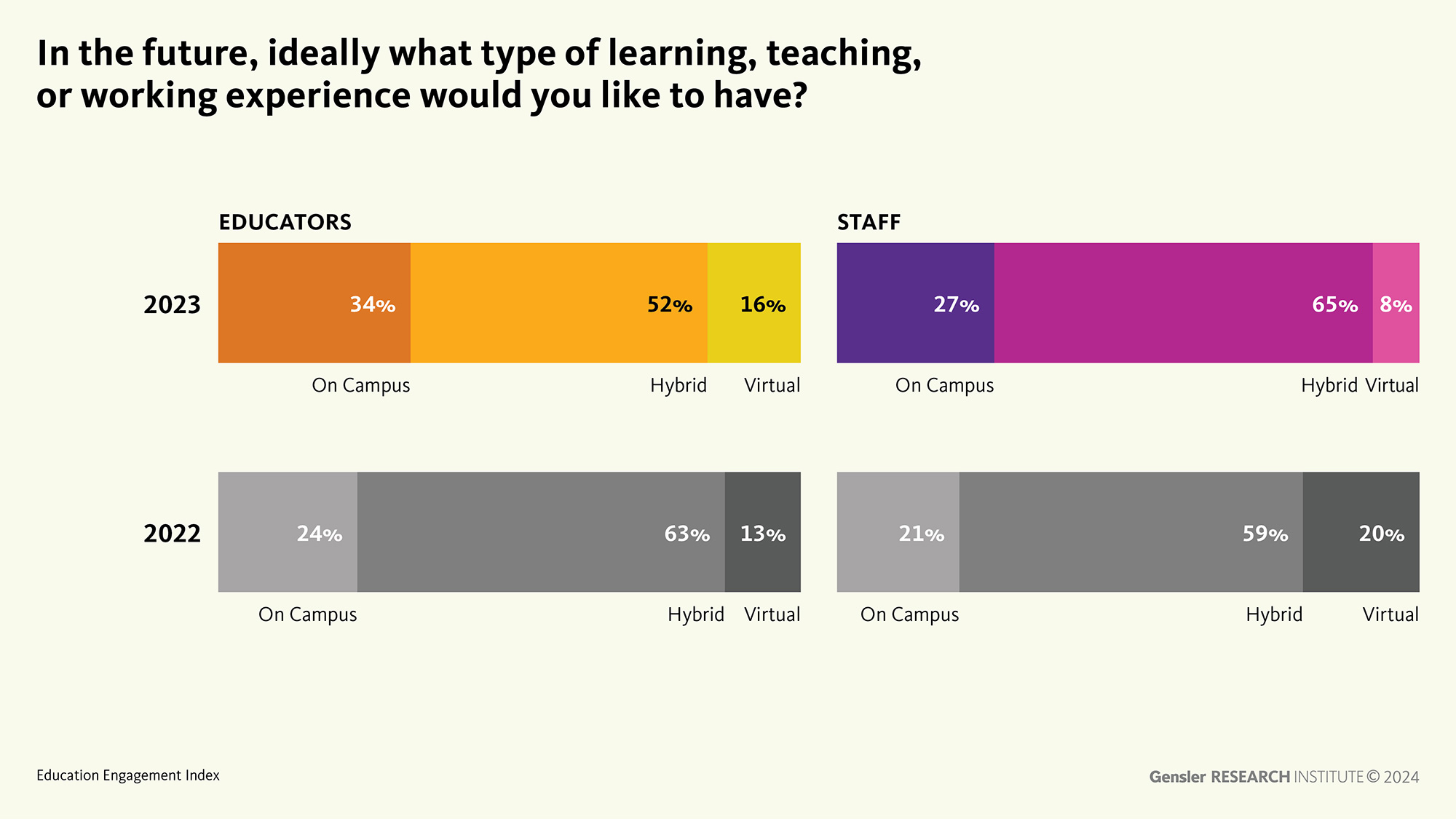
In addition to the desire to be hybrid, when asked how many days they need to be on campus to be effective in their roles, 47% of educators and 41% of staff stated that they need to be on campus three days per week or fewer.
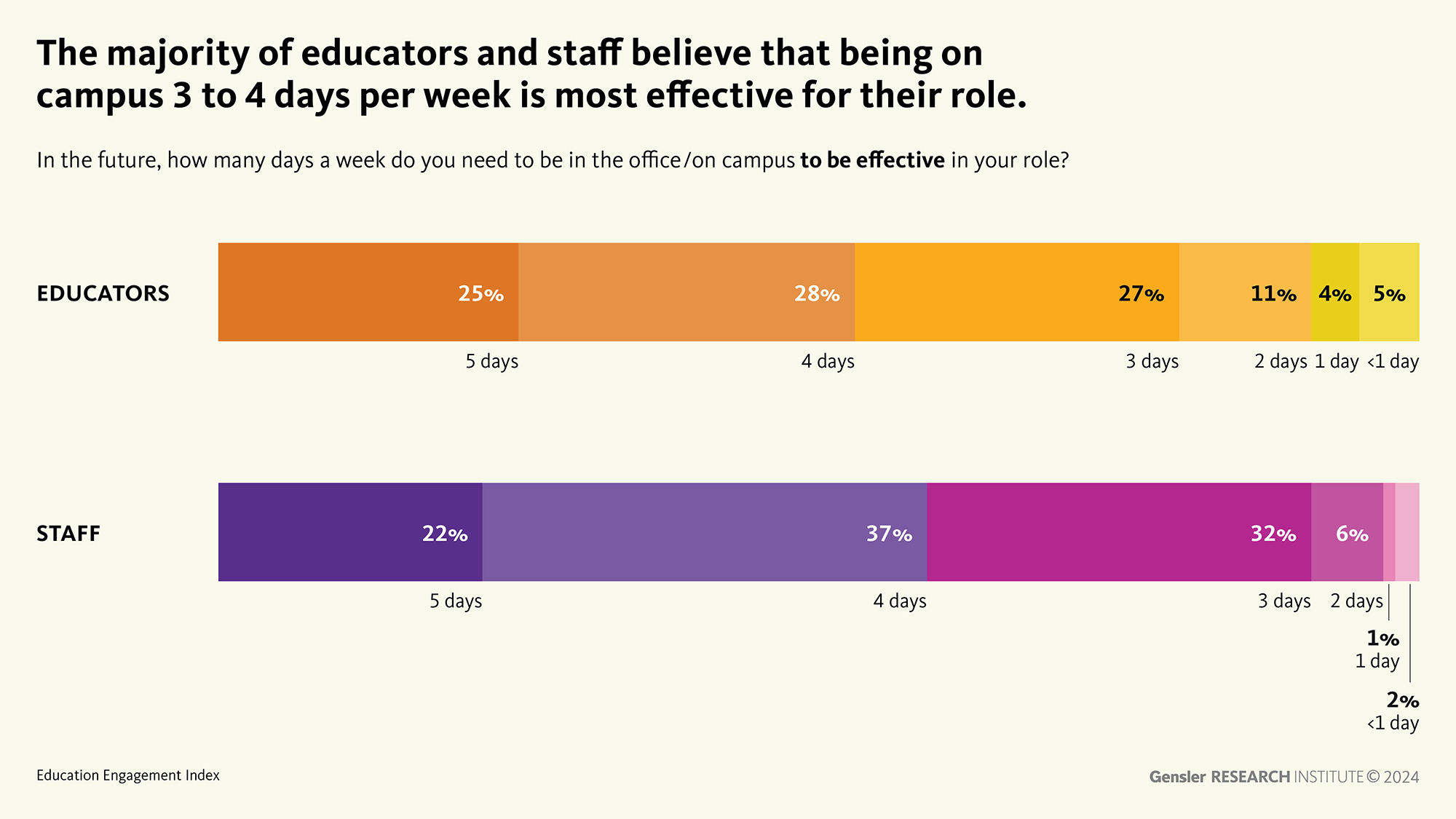
Educators and staff might not need (or want) an assigned, private office.
Academic workplaces are known for being office-heavy, with many private, enclosed spaces usually assigned to tenure-track faculty. When the respondents to this survey were asked what type of space they have, we were surprised to learn that only 31% of educators and 22% of staff actually have private offices. This varies by institution, but the fact that the majority of educators and staff are already sharing office space in some way may be helpful context for institutions considering alternatives to assigned, private offices.
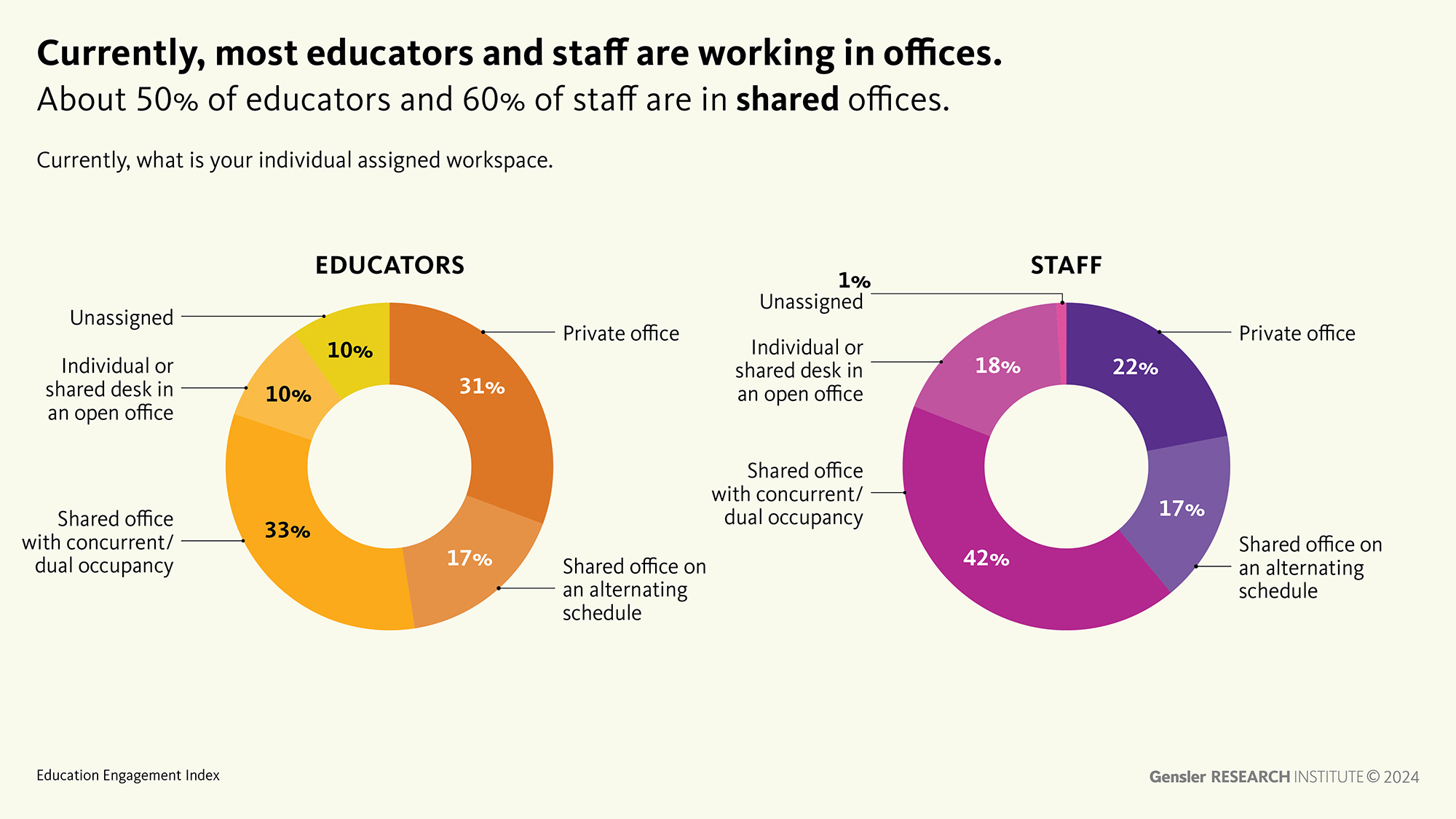
When asked if they would rather have an office or desk on campus that they share but more opportunities to work remotely or an office/desk used only by them but more expectation of working on campus, over 40% of educators and over 55% of staff were willing to share and have more opportunities to work remotely. When we disaggregated the responses based on the number of days individuals stated they need to be on campus, those who need to spend fewer days on campus were even more willing to share space with others.
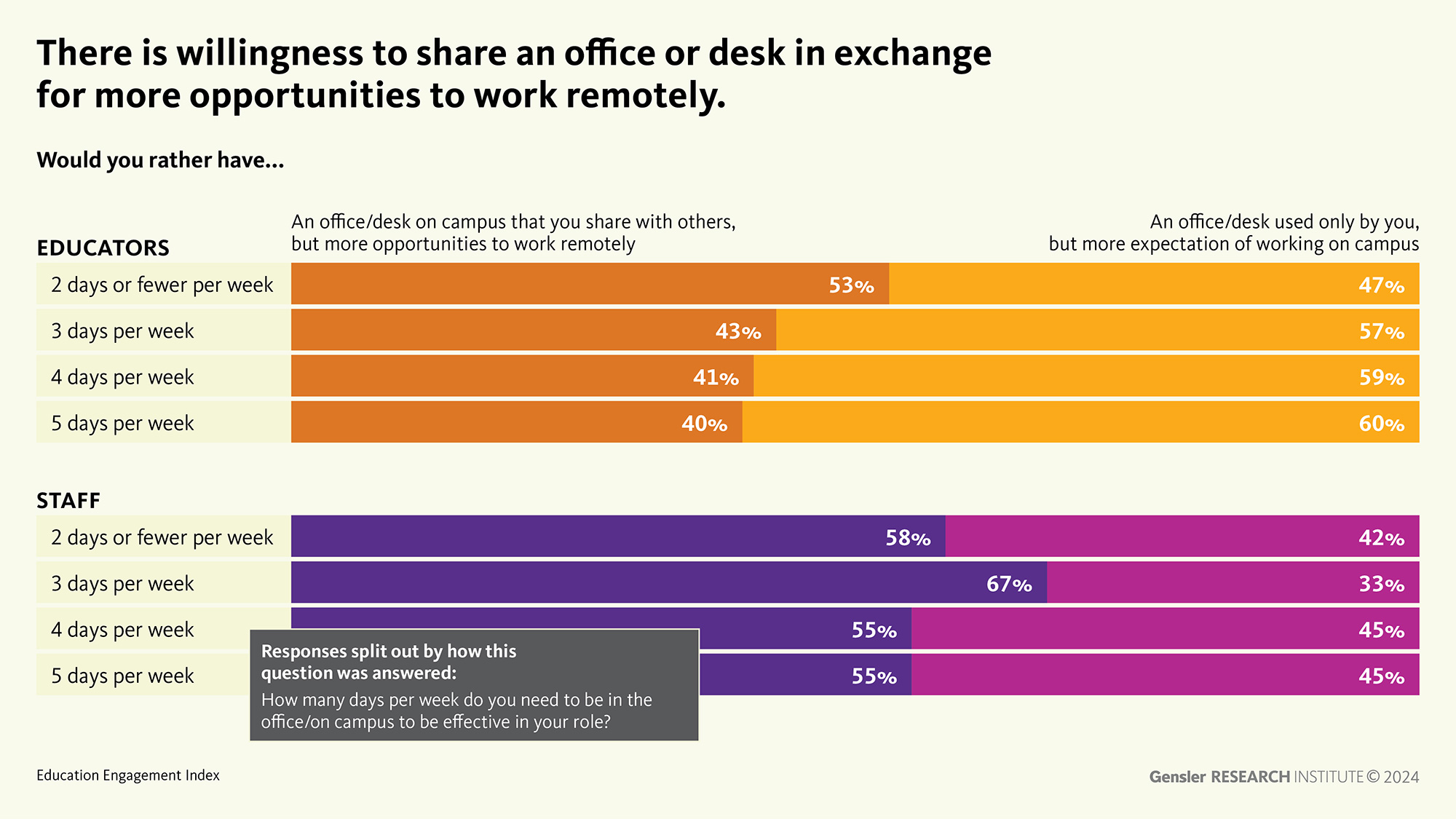
It is also useful to dig into what “sharing office space with others” could mean. The majority of staff and a significant portion of faculty currently assigned to private offices are willing to use a variety of alternative spaces, including concurrent occupancy with an officemate, alternating schedules with an officemate, using a “drop-in” private office, and even giving up the use of an office and using a desk or other space instead. The most preferred approach is to alternate schedules with an officemate, perhaps because it combines the benefits of having a private space during the time that you are there, while be able to leave personal items in the office. It is not surprising that the least preferred option was to use a desk or other space instead of an office, but about one-third of respondents were willing to do so.
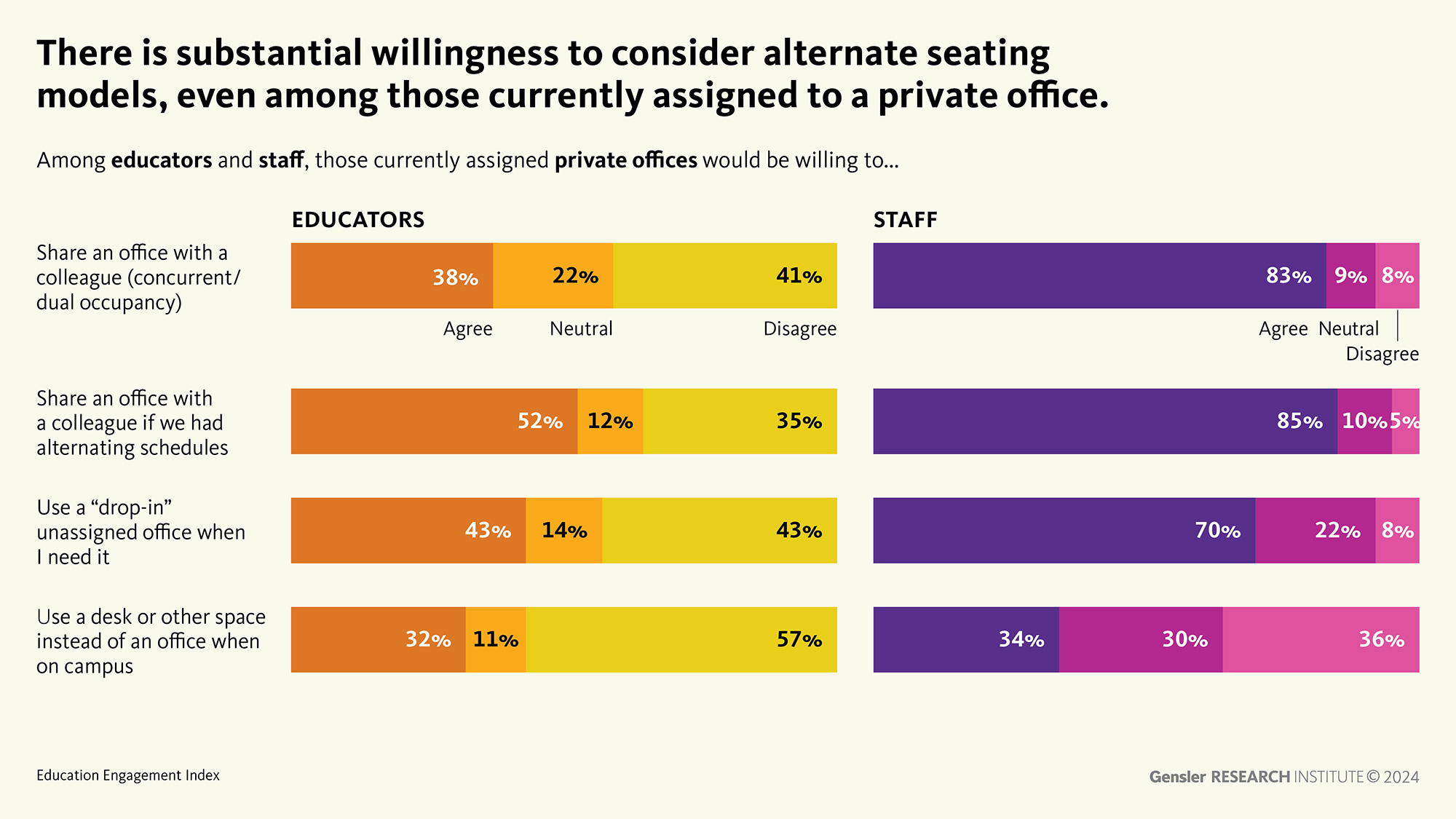
Overall, the findings from the 2023 Education Engagement Index suggest that campuses have a significant opportunity to explore new approaches to workspace, specifically shared and unassigned space for both staff and educators. This could be especially valuable as many institutions are faced with new demands for space and have limited ability to grow their total real estate. Reducing the amount of workspace on campus and reallocating it to instructional, wellness, and student support functions could be a game changer in helping institutions achieve their goals and create engaging campuses in the future.
Education Engagement Index 2023 Methodology
We deployed an online survey to an anonymous panel of 2,479 students, educators, and staff members at U.S.-based colleges and universities. Responses were collected from May 1 to June 7, 2023. This study was conducted through the Gensler Research Institute, a network of researchers and thought leaders who create insights that our education designers and strategists can use to tackle campuses’ toughest challenges, such as the student, faculty, and staff experience.
To learn more about the 2023 Education Engagement Index and how the findings relate to your Institution, please contact .
For media inquiries, email .


